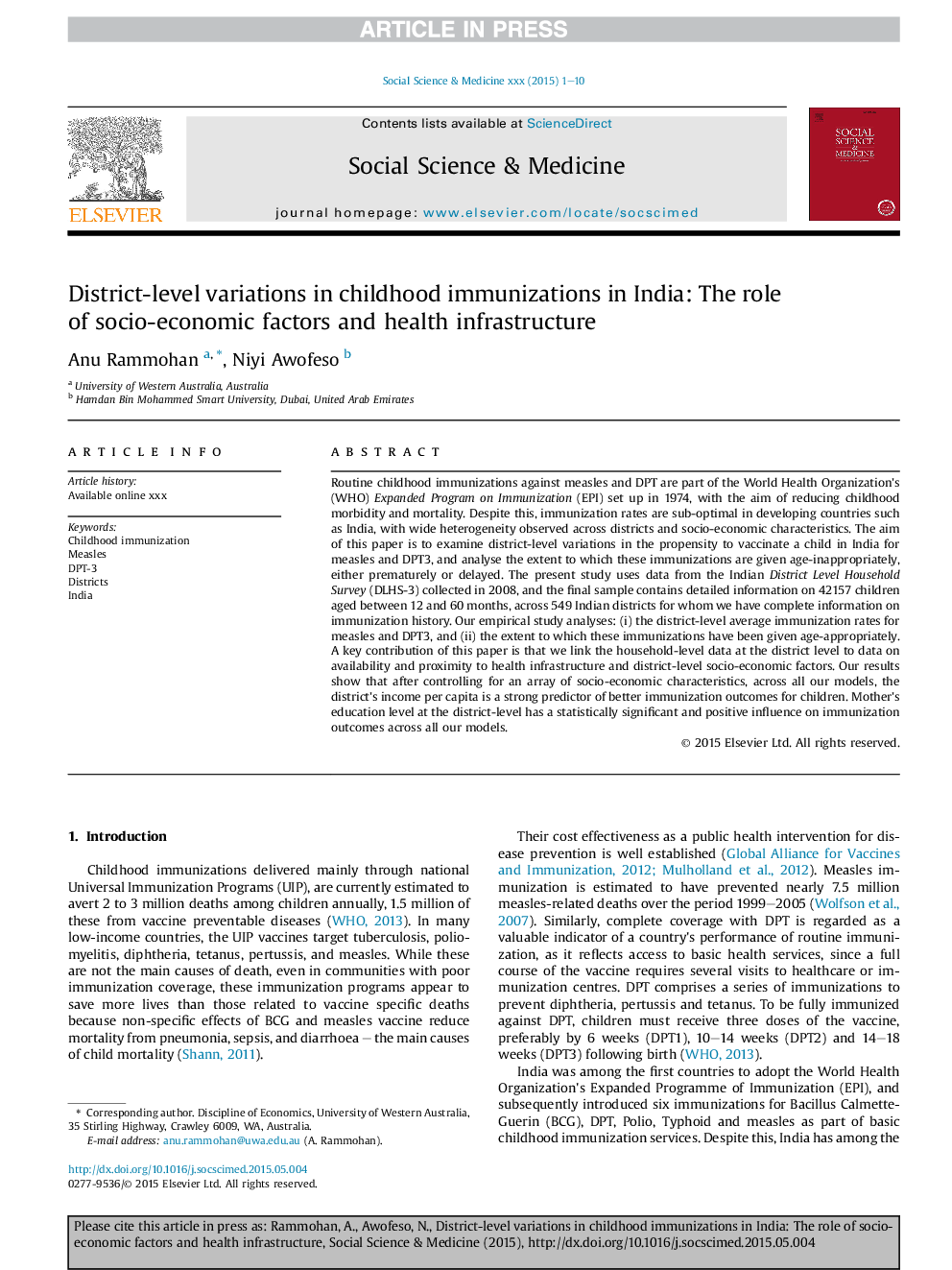| Article ID | Journal | Published Year | Pages | File Type |
|---|---|---|---|---|
| 7331414 | Social Science & Medicine | 2015 | 10 Pages |
Abstract
Routine childhood immunizations against measles and DPT are part of the World Health Organization's (WHO) Expanded Program on Immunization (EPI) set up in 1974, with the aim of reducing childhood morbidity and mortality. Despite this, immunization rates are sub-optimal in developing countries such as India, with wide heterogeneity observed across districts and socio-economic characteristics. The aim of this paper is to examine district-level variations in the propensity to vaccinate a child in India for measles and DPT3, and analyse the extent to which these immunizations are given age-inappropriately, either prematurely or delayed. The present study uses data from the Indian District Level Household Survey (DLHS-3) collected in 2008, and the final sample contains detailed information on 42157 children aged between 12 and 60 months, across 549 Indian districts for whom we have complete information on immunization history. Our empirical study analyses: (i) the district-level average immunization rates for measles and DPT3, and (ii) the extent to which these immunizations have been given age-appropriately. A key contribution of this paper is that we link the household-level data at the district level to data on availability and proximity to health infrastructure and district-level socio-economic factors. Our results show that after controlling for an array of socio-economic characteristics, across all our models, the district's income per capita is a strong predictor of better immunization outcomes for children. Mother's education level at the district-level has a statistically significant and positive influence on immunization outcomes across all our models.
Related Topics
Health Sciences
Medicine and Dentistry
Public Health and Health Policy
Authors
Anu Rammohan, Niyi Awofeso,
